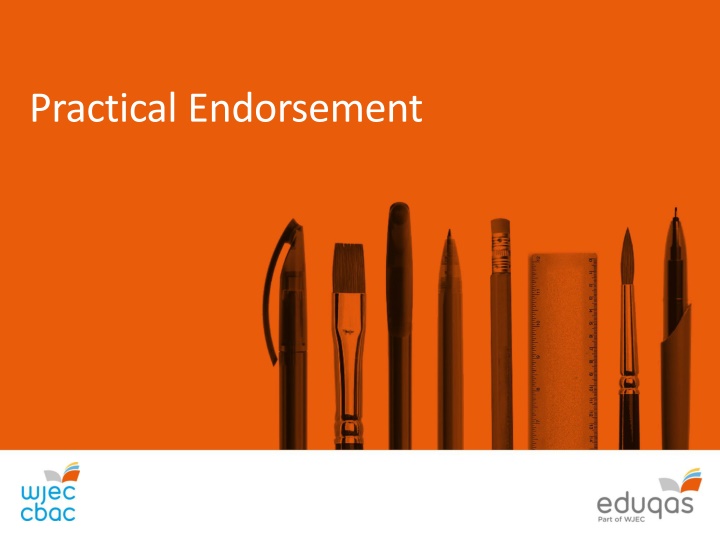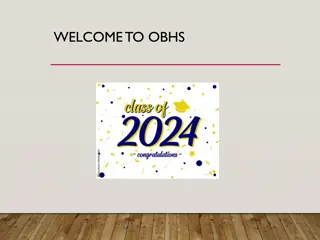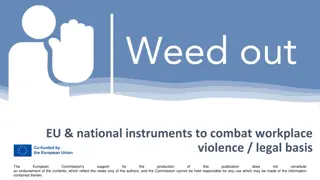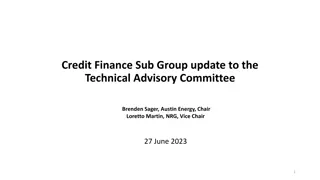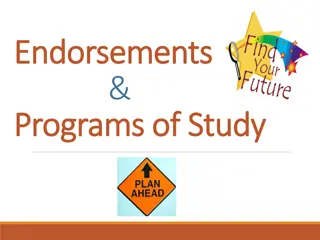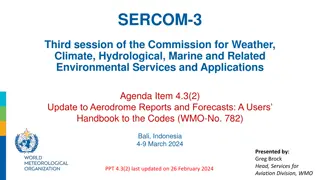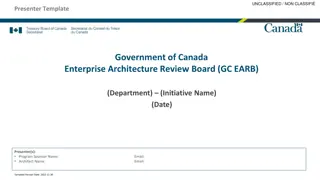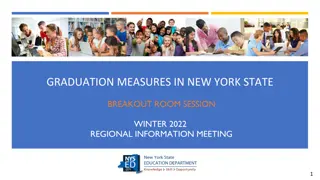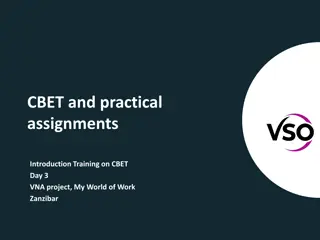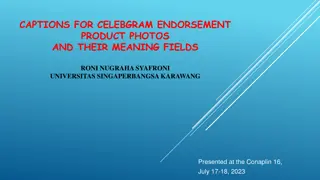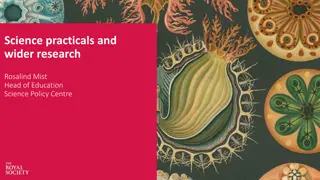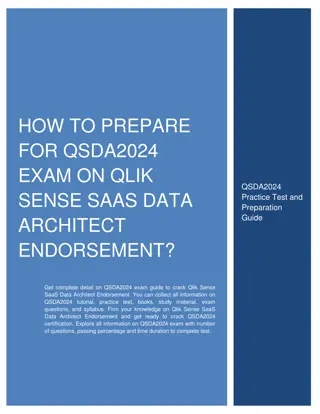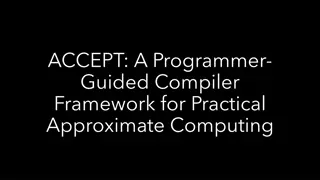Practical Endorsement
Connect with the case studies and ideas of The Curriculum Story Project 6 to explore new opportunities, discuss challenges, and practical activities for building partnerships in the community. Use creative thinking routines to foster innovative approaches in interdisciplinary learning.
Download Presentation

Please find below an Image/Link to download the presentation.
The content on the website is provided AS IS for your information and personal use only. It may not be sold, licensed, or shared on other websites without obtaining consent from the author.If you encounter any issues during the download, it is possible that the publisher has removed the file from their server.
You are allowed to download the files provided on this website for personal or commercial use, subject to the condition that they are used lawfully. All files are the property of their respective owners.
The content on the website is provided AS IS for your information and personal use only. It may not be sold, licensed, or shared on other websites without obtaining consent from the author.
E N D
Presentation Transcript
The purpose The purpose of the visit is to ensure that centres are: implementing practical endorsement appropriately applying the assessment criteria (CPAC) correctly The monitoring process is not intended to: moderate or adjust the results of individual candidates
How visits are planned Each centre will be visited at least once, in at least one of the sciences, during the period January 2016 to May 2017 i.e. learners could be seen in either the first or second year of their A level course If a centre has 140+ learners in any of the A level sciences then each science in that centre will have a monitoring visit from their AO
Monitors Monitors: are subject specialists represent the AO they have been appointed for only monitor the subject in a centre which is following the specification of the AO they represent should not have any contact with other sciences in the centre following other AO specifications
Evidence that needs to be available: 1. Documented plans to carry out sufficient practical activities 2. A record of each practical activity undertaken and the date when this was completed 3. A record of the criteria being assessed in that practical activity 4. A record of student attendance 5. A record of which student met the criteria and which did not; 6. Student work showing evidence required for the particular task with date 7. Any associated materials provided for the practical activity e.g. written instructions given
The day of the visit The monitor will: meet the Lead teacher observe a lesson including a practical activity discuss the teacher s CPAC assessment of the students meet students and discuss the practical work that students have been doing view the work of students from lesson view teachers records of assessment of practical work.
Feedback from the visits completed so far Nearly all centres are passing (nationally the first visit pass rate is approximately 90%) Very positive Excellent practice being seen Evident more practical work is being completed Lots of extra equipment being used Change of emphasis in practical work from needing to get the right answer to the right answer is the one your data presents
Key issues for centres not meeting the requirements Not engaging with the training Treating activities like controlled assessments under exam conditions Treating activities as coursework to be written up Treating individual activities as pass / fail Level of competence set too low or too high Not looking at students working, just recording the date carried out Staffing patterns and staff changes
Key points to consider Both the techniques covered and the competencies passed need to be recorded There is no exact number to define what constitutes: "consistently and routinely exhibits all five competencies in order to be awarded a Pass" Some teacher records are too detailed Endorsement lends itself to the use of both formative and peer assessment Lab books do not have to be beautifully presented they are working documents
Key points to consider Technician status and contract hours is proving to be a barrier in some schools and colleges Lack of practical equipment is sometimes an issue
The future of monitoring visits They will continue The proportion of centres to be visited and the frequency of the visits has yet to be determined The body that will continue to collect the data (still JCQ?) also has yet to be decided More information to follow
The criteria CPAC 1 Follows written procedures CPAC 2 Applies investigative approaches and methodswhen using instruments and equipment CPAC 3 Safely uses a range of practical equipment and materials CPAC 4 Makes and records observations CPAC 5 Researches, references and reports
The criteria for a pass In order to be awarded a Pass a Learner must, by the end of the practical science assessment, consistently and routinely meet the criteria in respect of each competency. A Learner may demonstrate the competencies in any practical activity undertaken as part of that assessment throughout the course of study.
General key points about the competencies Need to plan for a suitable balance on the competencies over the 2 years No need to sub-divide the competencies up Don t try and assess all the CPAC standards in one practical
CPAC 1 Key points to note: This is generally being done well
CPAC 2 Key points to note: This CPAC should focus on the choice of equipment This will be covered more in Year 13 than Year 12 It needs to be clear that there are planned opportunities for it to take place in Year 13 Sometimes being awarded in Year 12 where the students don t really have the opportunity to design the experiment
CPAC 3 Key points to note: This is generally being done well
CPAC 4 Key points to note: Being used incorrectly to assess the graph it mainly involves the table of raw data Tables and graphs not always presented well (e.g. dot to dot in Biology) Scientific drawings not always at an acceptable standard Quality of raw data recording was quite variable Level of precision was inconsistent Results should not be copied up later Should come from the setting up of their own equipment and not the choice
CPAC 5 Key points to note: There are two parts - processing data and carrying out research and reporting findings - referencing Data may be processed using mathematical relationships or using graphs. Spreadsheets can be used but tools could also include more traditional methods.
The visit Main focus is on paper work to check things are being recorded and they are embedded in the SoW. One practical will be observed where CPACs are being assessed N.B. monitors observe how a teacher assesses the CPACs and not the teaching. The teacher and the students will be interviewed but it is usually to check that this lesson is no different to any other lesson. The monitor will want to see the records of all students, and the practicals of everyone in the practical observed and at least 2 from every other set. The idea of the visit is more about providing guidance not passing/failing centres.
Tips Get the assessment paper work in order, particularly teacher s records of the CPACs covered and attendance. HoDs to store these records centrally to make sure students are progressing and gaining more CPACs by the time they are in Year 13 It is likely for pedagogical reasons you will want to give students far more feedback than is required by the AOs. Perhaps create a template that lets students see some sort of progression.
More tips Don t let students take their practical books out of the department. As the lab books are no longer going to be published it may make sense to print out the practicals for a file to be kept in the department. Students can be assessed on practicals not in the practical book just add them to your records for the practical endorsement.
Useful resources On all Eduqas A level science web pages (under all course materials): Lab book Teacher / technician guidance for specified practicals General student practical guidance CPAC links Practical endorsement FAQs The practical endorsement standard Student record Teacher record Pen portraits (included in your pack) CPD material from Autumn 2015 (available on the secure website in the CPD folder in the resources folder)
Entries for the practical endorsement
Practical science statement This is a true and accurate written statement made by a centre to their AO which confirms that for each learner the centre has ensured that they have: (a) completed at least 12 practical activities as required by the awarding organisation, and (b) made a contemporaneous record of the work which that learner has undertaken during those practical activities.
Practical science statement This will be covered by the annual head of centre declaration form which will be sent to all centres and the headteacher will be required to sign.
Submission of results By 15 May via the WJEC secure website each centre will have to enter for each candidate their result in the practical endorsement.
Any Questions? If you have any queries please contact - helen.francis@eduqas.co.uk
